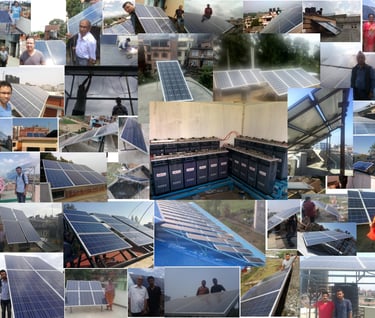
Danphe's Innovation & Urban Solar PV Program
Background
Prior to Danphe, national awareness of solar PV was limited mostly to small solar PV systems designed to power a few LED light bulbs. Since its existence in 2012, Danphe has been a strong advocate for developing bigger solar PV systems to bring about economies of scale, improved system reliability, and higher value output. Unfortunately, policy infrastructure for scaled solar PV systems then was limited, which dramatically restricted people’s interest in the technology and their ability to afford larger solar PV systems.
Danphe’s Innovation
Danphe partnered with a leading energy-inclined financial institution, Clean Energy Development Bank (now NMB Bank), to pilot an innovative three-way partnership (customer, bank, service provider) model to fund a few residential and small-commercial systems. This model also enabled waiving the need for any personal guarantees or external collateral for the projects, a setup which originally existed only for large hydroelectric projects.
By increasing affordability of the products, while still optimizing for financial and technical risks, this model was able to create a win-win proposition for all three parties involved.


Outcome & National Proliferation
The pilot model was vastly successful, with hundreds of customers quickly signing up for the new affordable systems. Danphe Energy, along with Gham Power, were the only two implementing partners for the bank then. This quickly gained media and government attention.
Capitalizing on the momentum, the government soon introduced an aggressive urban solar PV program that offered subsidized loans for residential (75% interest subsidy) and commercial (50% interest subsidy) solar PV systems. This new program became the main force behind increased interest among consumers and service providers, which ultimately led to rapid deployment of residential and commercial scale solar PV systems all over Nepal.
Over the next few years, the sector enjoyed continued improvements in consumer awareness, technical capacity, and policy environment, thereby resulting in a steady increase in typical system size from ~100W to hundreds of KWs. Danphe continues and will continue to play a crucial role in the technology's success.
